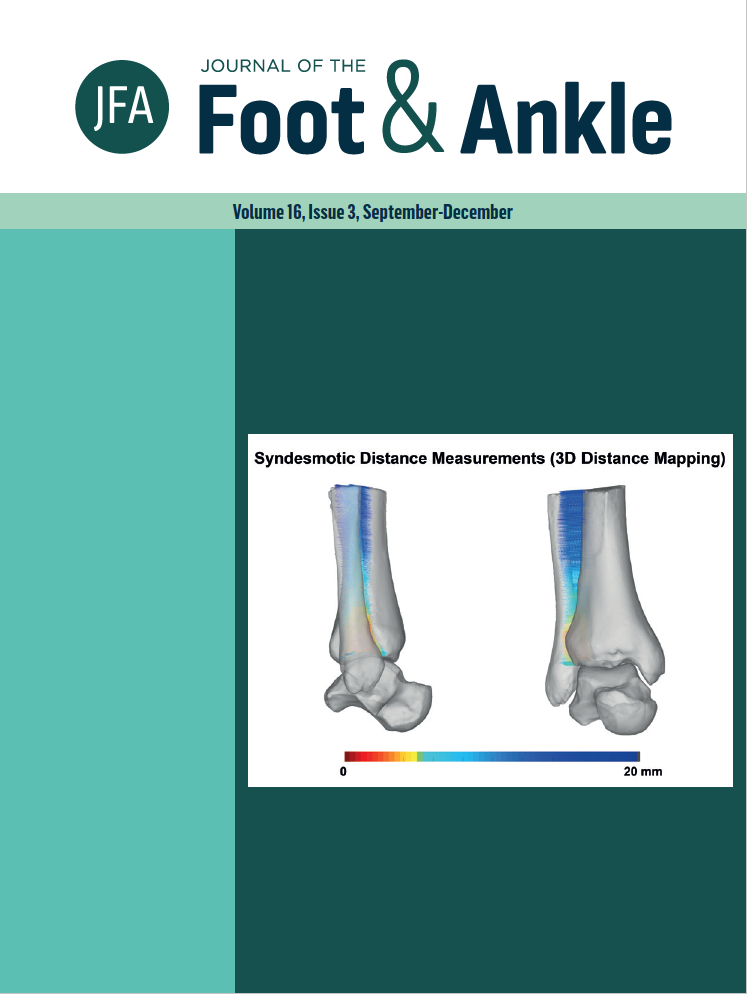Three-dimensional assessment of hallux valgus correction using the Lapicotton technique
DOI:
https://doi.org/10.30795/jfootankle.2022.v16.1674Keywords:
Flatfoot, Hallux valgus, Orthopedic procedures, Weight-bearing, Tomography, x-ray computedAbstract
Objective: The objective of the study was to assess the efficacy of the LapiCotton procedure on patients with hallux valgus (HV) combined with medial longitudinal arch collapse. Methods: Preoperative and postoperative weight-bearing computed tomography (WBCT) scans were obtained from patients with HV submitted to the LapiCotton procedure. Semi-automatic measurements were applied to 22 WBCT images across 11 patients enrolled in the study using a software package (Bonelogic, Disior™, Helsinki, Finland). Significance level was set at 0.05. Results: The hallux valgus angle (HVA) was significantly larger (p=0.026) in the preoperative group (Mdn = 27.52) than in the postoperative group (Mdn = 20). In addition, the Meary sagittal measurement was found to be significantly increased (p=0.033) in the preoperative group (Mdn = -14.28) when compared to the postoperative group (Mdn = -11.15). It was also observed that the intermetatarsal angle was significantly larger (p=0.003) in the preoperative group (Mdn = 15.68) compared to the postoperative group (Mdn = 11.26). Conclusion: The LapiCotton procedure effectively corrected radiographic parameters in patients with HV combined with the medial longitudinal arch collapse. Level of Evidence III; Therapeutic Studies; Comparative Retrospective Study.
Downloads
Published
How to Cite
Issue
Section
License
Copyright (c) 2022 Journal of the Foot & Ankle

This work is licensed under a Creative Commons Attribution-NonCommercial 4.0 International License.







